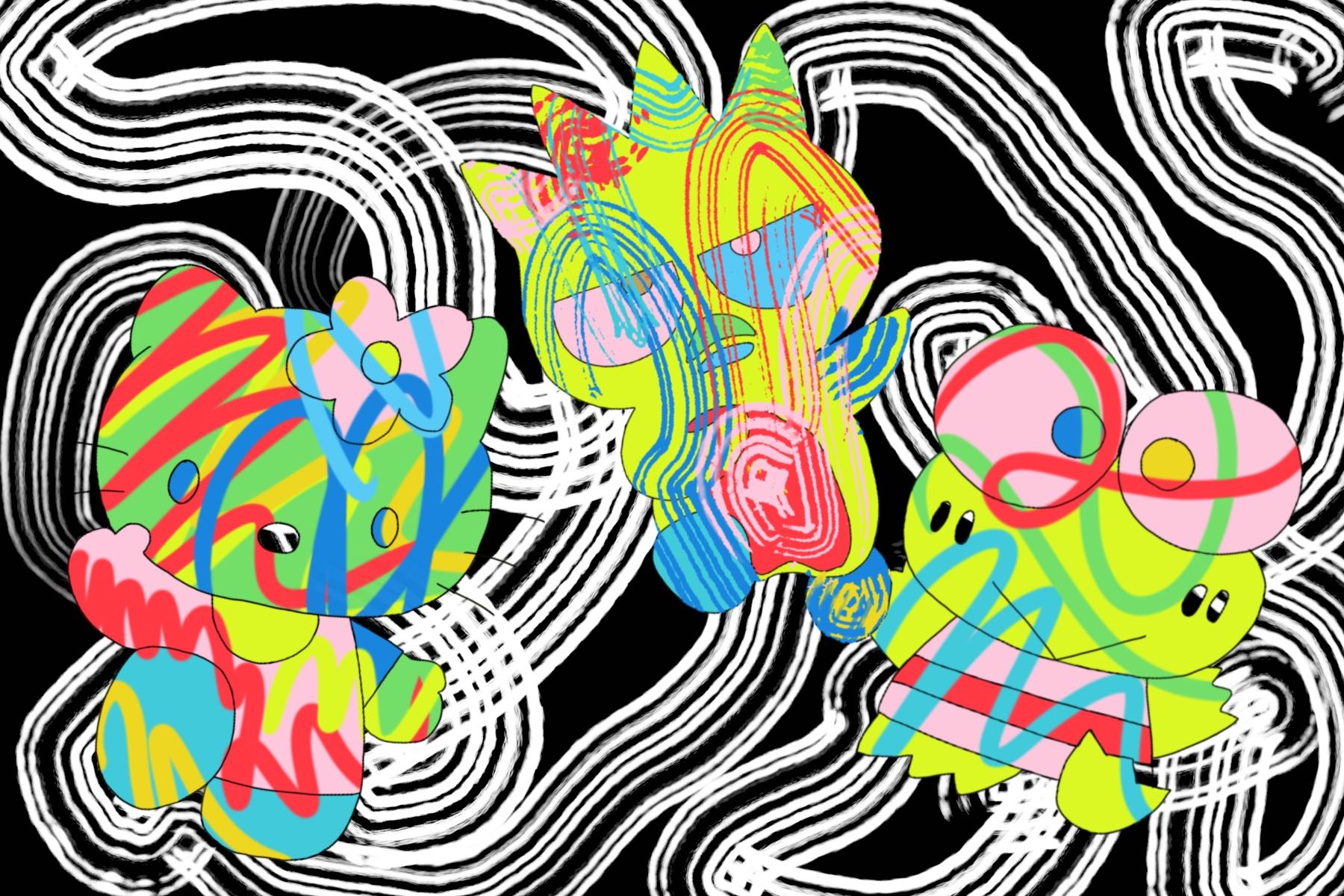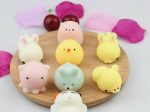The Yamanashi Silk Company was founded in 1960 by Shintaro Tsuji. He attended a kindergarten run by a Canadian missionary. There, he experienced the custom of birthdays for the first time, and became inspired by gift-giving. He created his company to foster the culture of it. One of their first items was rubber sandals with flowers painted on them. Tsuji noticed that the cuter his items were, the more they sold, and decided to hire cartoonists to design cute characters for his merchandise.
In 1973, the company rebranded itself as Sanrio, and has ended up being one of the biggest contributors to kawaii culture — giving the world adorable icons such as Hello Kitty, Chococat, Gudetama and Keroppi. The company’s beloved characters are so popular that Sanrio hosts two theme parks in Japan, sells merchandise worldwide and has had their own Netflix shows. Two of their best-known characters that have taken the world by storm are Hello Kitty and Gudetama.
Top Cat
When you think of Sanrio, there’s a good chance that the first image to pop up in your mind is Hello Kitty — a mouthless, button nosed white cat (well, according to a Sanrio spokesperson, she’s technically a “personification” of a cat) with a red bow. Hello Kitty was designed by Yuko Shimizu in 1974. She made her humble start on a coin purse where she was pictured sitting between a goldfish bowl and bottle of milk.
She sold well immediately after being introduced to the public and, although experiencing a few rough patches here and there, still sells well to this day. In 2019, Hello Kitty was the second highest grossing franchise of all time, right behind Pokémon. The cat has generated $80 billion in lifetime retail sales.
https://www.instagram.com/p/B9RwSSwAQL1/
Although she was originally marketed towards young girls, Hello Kitty ended up attracting fans of all ages, backgrounds and genders. The change in Hello Kitty products available reflects how she’s recognized her diverse fan base and changed with the times. In the 1980s, the only Hello Kitty merchandise you might’ve seen would have been stationary, but today, you can buy swimsuits, watches, luggage and hand creams. She’s even been on airplanes and electric guitars.
Besides just being plain adorable, one of the reasons Hello Kitty is so popular is her lack of a mouth. Sanrio’s explanation for this is because she speaks from the heart. She doesn’t need a mouth because she doesn’t need to speak a language to tug at your heart strings — taking a look at her popularity, that’s obviously been proven true. Another perk to her mouthless design is that people can project onto her.
“She’s stoic, she’s expressionless and people can put onto her almost any kind of emotion,” branding expert Dorie Clark told Associated Press. It’s actually not that strange to project onto fictional characters, and there’s a good chance that you’re going to care a lot for a character you can find comfort in.
Who better than an expressionless cat with moldable emotions? If you’re sad, she’s sad. If you’re happy, she’s happy. Jill Koch, senior vice president of brand management and marketing at Sanrio, summed it up best when she said, “She is so empowering because she can be anything you want her to be.”
The World’s Laziest Egg
Gudetama is a stark contrast to most of the characters in kawaii culture, who are typically positive and energetic. The first part of its name comes from the ideophone “gudegude,” which is used to paint the image of something lacking energy. The second part comes from the Japanese word for egg, which is “tamago.”
In English, this translates to “lazy egg,” which is exactly what Gudetama is. You can find it with an apathetic look on its face, sighing and laying on its egg white bed complete with a bacon blanket.
Gudetama was created by Sanrio designer AMY, who got the inspiration from an egg she was preparing for dinner one day. She said the egg had a droopy demeanor, and in a way, that reminded her of the young people of today. She designed Gudetama to attract millennials, and the character made its debut in 2014.
Although originally coming in second place in the food-based character competition held by Sanrio, the slothful egg is getting the Hello Kitty treatment. You can find its face on wallets, t-shirts, umbrellas, backpacks, face masks and even trains. It also has its own Twitter with a million followers, the most out of all Sanrio characters.
Gudetama is so popular because it acts how most people feel inside, especially in a politically tumultuous, stressful, divided world like today. While people may love Hello Kitty because she is a blank canvas, people love Gudetama because of its defined personality. The character is withdrawn, sleepy and feels existence is unbearable.
It has a “who cares?” attitude as it lies exasperated on its bed, covering its face with an eggshell and draping a piece of bacon over its lower half. It’s kind of what everyone wishes they could do — curl up into a ball and stop worrying about everything for a little bit. We all feel like retreating into our shells sometimes, and Gudetama, well, he’s just literally doing it.
Sanrio’s Charm
Sanrio is meticulous in their character designs. These icons of cuteness that we’ve all come to know and love aren’t just created on a whim. They carry out surveys and only hire the best artists. They take note of any changes to their customer base. They adapt to the times. They are perfectionists when it comes to kawaii culture. Their characters are so popular because they defy borders, languages and ethnicities.
Although they’re all made in Japan, you don’t have to be Japanese or understand the language to love or relate to them, and even though they’ll continue to reflect societal trends, their core message and what they stand for will remain the same. Sanrio has found the balance between evolution and consistency. It’s safe to assume that we won’t be saying goodbye to them anytime soon.












